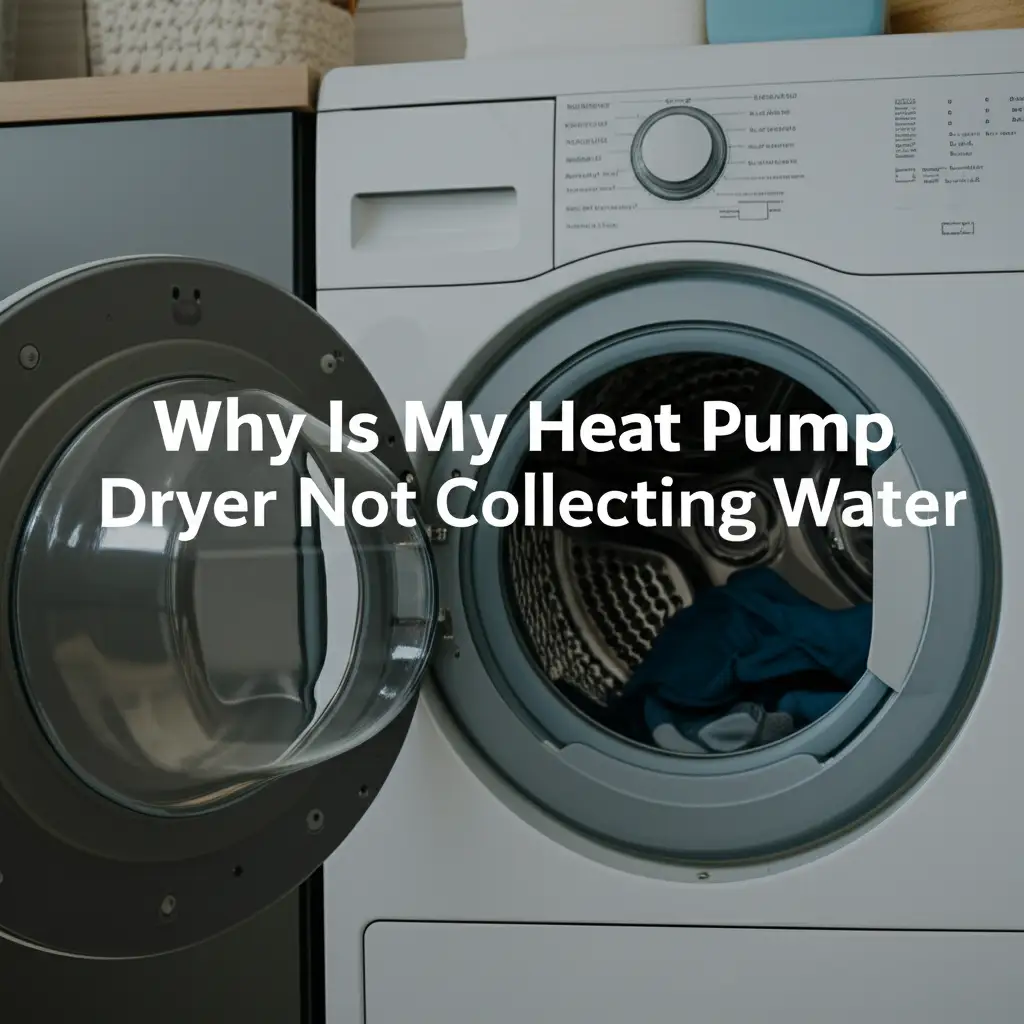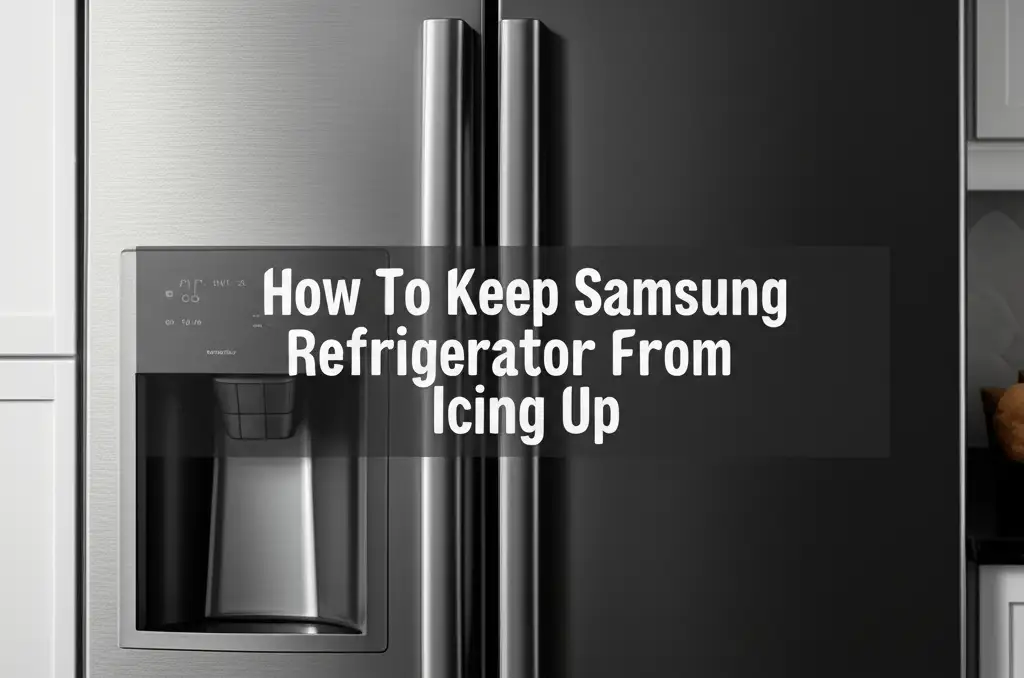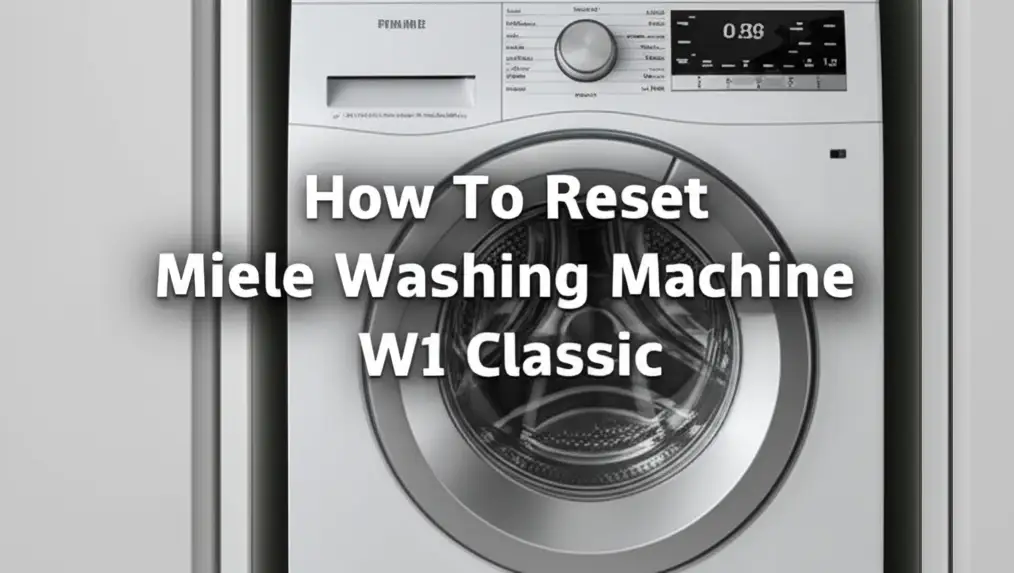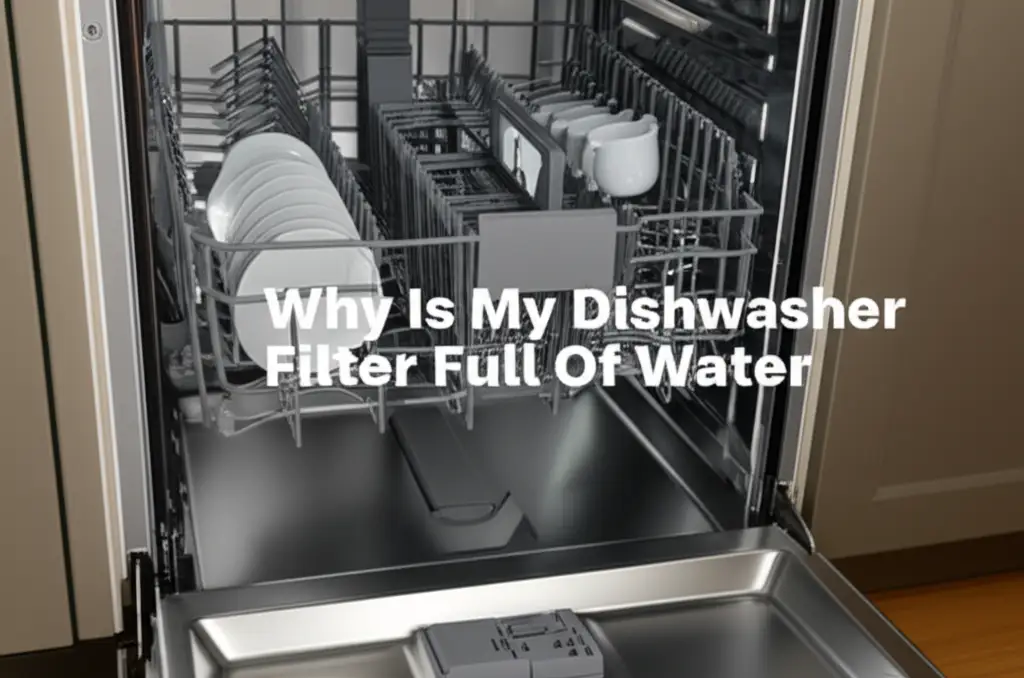· Katria Melrose · Appliance Maintenance · 19 min read
Why Is My Heat Pump Dryer Not Collecting Water

Troubleshooting Your Heat Pump Dryer: No Water Collection?
Imagine this: You pull laundry from your heat pump dryer, expecting dry clothes and a full water tank. Instead, your clothes are damp, and the tank remains empty. This is frustrating for anyone who relies on their appliance. A heat pump dryer not collecting water is a common issue. It usually points to a problem with its condensation system. Understanding these issues helps you fix your dryer. We will explore common reasons why your dryer fails to collect water. We will also provide clear steps to diagnose and solve these problems. This guide helps you restore your dryer’s proper function and efficiency.
Takeaway
- Check Filters: Clean the lint filter and the evaporator/condenser filter regularly. Clogged filters are the most common cause.
- Inspect Drainage: Ensure the drain hose is clear and not kinked. Check the water reservoir and pump for blockages.
- Clean Condenser: The condenser unit needs periodic cleaning to work correctly.
- Assess Sensors: Faulty moisture or water level sensors can prevent proper operation.
- Review Environment: Room temperature and proper dryer leveling affect condensation.
Your heat pump dryer might not collect water due to blocked filters, a dirty condenser, or issues with the drainage system. Less common reasons include faulty sensors or environmental conditions like low room temperature. Addressing these specific components often resolves the problem, ensuring your dryer can efficiently remove moisture from clothes.
Understanding How Your Heat Pump Dryer Works
A heat pump dryer operates differently from traditional vented dryers. It does not expel warm, moist air outside. Instead, it reuses the air within a closed loop system. This design makes heat pump dryers highly energy efficient. The machine draws air from the drum. This air then passes over an evaporator coil. Moisture from the clothes condenses on this cold coil, turning into liquid water. The now drier, cooler air moves to a condenser coil. Here, it is reheated. This warm, dry air then goes back into the drum to continue drying the clothes. The collected water drips into a collection tank or drains away through a hose. This continuous cycle means the dryer should always produce some water. If your heat pump dryer is not collecting water, this condensation process is not working correctly.
This efficient drying method relies on precise temperature and airflow. Any disruption affects its ability to condense water. The machine needs to create a significant temperature difference. This difference causes water vapor to turn into liquid. The system is delicate. A small blockage can stop the entire process. Regular maintenance is important to keep this system running smoothly. My own experience with these dryers shows that they are reliable when cared for properly.
Clogged Filters: A Primary Culprit for No Water Collection
One of the most frequent reasons a heat pump dryer is not collecting water is due to clogged filters. Heat pump dryers use multiple filters to protect their internal components. These filters prevent lint and debris from entering the system. If lint builds up, it restricts airflow. When airflow is restricted, the dryer cannot efficiently remove moisture from clothes. It also cannot condense water effectively. This leads to longer drying times and an empty water tank.
Main Filter Types to Check:
- Lint Filter: This is the most obvious filter. It is usually located inside the dryer door opening. You should clean this filter after every load. This prevents lint buildup.
- Evaporator Filter (or Condenser Filter): Heat pump dryers also have a secondary filter. This filter protects the evaporator and condenser coils. It usually sits behind a flap or panel at the bottom of the dryer. Manufacturers often call it a condenser filter. This filter captures smaller lint particles that pass the main lint filter.
Cleaning Your Dryer Filters:
- Empty the Lint Filter: After each drying cycle, remove the lint screen. Use your hand to wipe away all lint. If the screen has a waxy film from dryer sheets, wash it with warm, soapy water. Rinse it thoroughly and dry it completely before putting it back.
- Clean the Evaporator/Condenser Filter: This filter needs cleaning less often. Check your dryer manual for specific instructions. Most manufacturers recommend cleaning it monthly or every few cycles. Remove the filter. You might need to rinse it under running water or use a soft brush. Make sure it is completely dry before reinstalling.
- Check Air Ducts: Sometimes, lint can build up in the dryer’s internal ducts. This is especially true if filters are not cleaned regularly. Use a vacuum cleaner with a narrow attachment to clean these areas. This ensures proper airflow throughout the system.
A dirty filter stops proper air circulation. This directly impacts the dryer’s ability to condense moisture. I always tell my friends to prioritize filter cleaning. It is a simple step that solves many common dryer issues. Neglecting filter maintenance leads to more serious problems over time. For more tips on keeping your appliance clean, consider reading about how to clean your dryer. This routine maintenance extends your dryer’s life and efficiency.
Condenser Unit Issues: Impacting Water Collection
The condenser unit is a vital part of your heat pump dryer’s water collection system. It functions much like a refrigerator coil. It gets cold and causes water vapor to condense into liquid. If this unit becomes dirty or blocked, it cannot perform its job. Dirt and lint can accumulate on the condenser fins. This creates an insulating layer. This layer prevents the fins from getting cold enough. When the fins are not cold, water vapor does not condense efficiently. As a result, your heat pump dryer is not collecting water, and clothes remain damp.
How to Clean the Condenser Unit:
- Locate the Condenser: The condenser unit is usually behind a removable panel at the bottom front of the dryer. Refer to your dryer’s user manual for its exact location and removal instructions.
- Remove the Condenser: Most condensers are designed for easy removal. You may need to unclip a latch or twist a knob. Handle it with care as it can be delicate.
- Clean the Fins: Use a soft brush or a vacuum cleaner with a brush attachment. Gently remove any lint, dust, or debris from the condenser fins. Do not bend or damage the delicate fins. Some models allow rinsing the condenser under a faucet. If your manual permits this, ensure the unit is completely dry before reinstallation. This can take several hours.
- Inspect Seals: Check the rubber seals around the condenser unit. These seals ensure a tight fit. A damaged or improperly seated seal can allow warm, moist air to bypass the condenser. This reduces condensation efficiency. Replace any worn or damaged seals.
A dirty condenser directly reduces the dryer’s ability to extract moisture. This causes clothes to stay wet. It also means less or no water collects in the tank. I have seen many instances where a thorough condenser cleaning resolved issues with dryers taking too long to dry. Maintaining the condenser helps your dryer run efficiently. It prevents problems like a Bosch heat pump dryer taking so long to complete a cycle. For more specific cleaning tips on appliance coils, you might find information on how to clean heat pump coils helpful.
Drainage System Problems: Where Water Goes Wrong
Even if your heat pump dryer is condensing water, it might not collect in the tank or drain away. This problem points to an issue within the drainage system. Heat pump dryers either collect water in a removable reservoir or drain it directly through a hose. Both systems can develop issues. A blockage or malfunction in this system means the condensed water has no clear path. This will cause your heat pump dryer not to collect water.
Common Drainage System Faults:
- Full Water Reservoir: This might seem obvious, but sometimes the water tank simply needs emptying. If the tank is full, the dryer will stop collecting more water. Some dryers have a sensor that halts operation if the tank is full.
- Blocked or Kinked Drain Hose: If your dryer is plumbed directly into a drain, the hose can become blocked. Lint, fabric softener residue, or mineral deposits can accumulate inside. The hose can also become kinked or crushed, preventing water flow.
- Check the Hose: Disconnect the drain hose from both the dryer and the standpipe/drain. Inspect it for kinks or blockages. Use a long brush or snake tool to clear any obstructions.
- Malfunctioning Drain Pump: Heat pump dryers with a direct drain hose often have a drain pump. This pump pushes water out of the machine. If the pump is faulty, it will not move water. You might hear the pump trying to work, or you might hear nothing at all. A failing pump often requires professional replacement.
- Blocked Drain Path within Dryer: Water might collect internally but cannot reach the tank or hose. This could be due to a blockage in the internal water channels. Lint and soap residue can build up over time. Accessing these channels can be complex. You might need to remove panels to clean them.
I have seen similar issues with other appliances. For example, a Samsung refrigerator collecting water in the bottom often has a clogged drain line. The principle is the same for a dryer. Ensuring a clear path for water is essential. Always double-check connections and clear any visible debris. Proper drainage is key to efficient operation.
Sensor Malfunctions and Electronic Glitches
Heat pump dryers rely on a network of sensors to function correctly. These sensors monitor various conditions inside the drum and the condensation system. If a sensor malfunctions, it can send incorrect signals to the dryer’s control board. This can lead to a variety of operational problems, including the dryer not collecting water. Electronic glitches, while less common, can also disrupt the condensation cycle. They cause the dryer to misinterpret conditions or fail to activate necessary components.
Key Sensors Involved:
- Humidity/Moisture Sensors: These sensors detect the moisture level in your clothes. They are typically metal strips inside the drum. If they are dirty or faulty, the dryer might incorrectly believe the clothes are dry. This would prevent the condensation process from fully engaging.
- Cleaning: Wipe down the metal sensor strips with a cloth dampened with rubbing alcohol. This removes residue that can interfere with accurate readings.
- Water Level Sensor: If your dryer has a water collection tank, it also has a sensor that detects when the tank is full. If this sensor malfunctions, it might falsely indicate a full tank. This would stop water collection, even if the tank is empty.
- Checking: Empty the tank completely. If the dryer still acts as if the tank is full, the sensor might be faulty. Some sensors can be accessed and cleaned.
- Temperature Sensors: The dryer’s operation relies on precise temperature readings within its closed-loop system. If a temperature sensor gives an incorrect reading, the heat pump may not operate at the optimal temperature for condensation.
- Control Board Issues: The dryer’s main control board is the brain. It processes signals from all sensors and controls all components. An electronic glitch or fault on the control board can lead to erratic behavior. This includes failing to initiate or complete the condensation process.
- Resetting: Sometimes, a simple power cycle (unplugging the dryer for 10-15 minutes and plugging it back in) can reset the control board and clear minor glitches.
Diagnosing sensor or control board issues can be difficult for the average user. Error codes displayed on the dryer’s screen can provide clues. Consult your dryer’s manual for a list of error codes and their meanings. If a sensor is truly faulty, it often needs replacement by a qualified technician. A dryer that keeps stopping, like a Bosch heat pump dryer that keeps stopping, might be experiencing sensor-related problems. These issues often require deeper troubleshooting.
Environmental Factors and Installation Concerns
The environment where your heat pump dryer operates can significantly impact its ability to collect water. Heat pump dryers are sensitive to external conditions. They require specific settings to work efficiently. Incorrect installation or unsuitable environmental factors can lead to poor condensation. This means your heat pump dryer is not collecting water as it should.
Important Environmental and Installation Points:
- Room Temperature: Heat pump dryers work best in a moderate ambient temperature. If the room is too cold (below 45-50°F or 7-10°C), the heat pump system may struggle to create the necessary temperature difference. This difference is vital for effective condensation. The system cannot make the evaporator coil cold enough for water vapor to condense.
- Solution: Operate the dryer in a heated space, like a basement or laundry room, that stays above the recommended minimum temperature. Avoid unheated garages or sheds during cold months.
- Humidity Levels: Very high humidity in the room can also affect efficiency. While less common, it can slightly reduce the dryer’s ability to pull moisture from clothes.
- Ventilation of the Room: Although heat pump dryers do not vent to the outside, the room still needs good ventilation. This helps prevent the general buildup of heat and humidity that the dryer itself might release.
- Proper Leveling: Your dryer must be perfectly level. If the dryer is not level, the internal components might not function correctly. Water might not drain properly to the collection tank or drain hose.
- Checking Level: Use a spirit level on top of the dryer. Adjust the dryer’s leveling feet until it is stable and level in all directions.
- Overloading the Dryer: Putting too many clothes into the dryer can hinder proper airflow. Clothes need space to tumble freely. When overloaded, air cannot circulate effectively. This prevents efficient moisture extraction and condensation.
- Solution: Dry smaller loads. Do not pack the drum tightly.
Proper installation ensures your appliance performs as expected. For instance, the placement of your dryer matters. People often wonder can you put a heat pump dryer on top of a washing machine? Yes, often you can. But you must use the correct stacking kit and ensure stability and proper leveling. These small details can prevent performance issues. Always check your appliance manual for specific environmental and installation guidelines.
Addressing Unusual Scenarios and Professional Help
While filter issues, condenser problems, and drainage clogs are the most common culprits, sometimes a heat pump dryer not collecting water points to a more complex issue. These scenarios might involve internal system failures. They often require the expertise of a professional appliance technician. Trying to fix these problems yourself can lead to further damage or safety risks.
Less Common but Serious Problems:
- Refrigerant Leak: A heat pump dryer uses a sealed refrigeration system. This system is similar to a refrigerator or air conditioner. It contains refrigerant gas. If there is a leak in this system, the heat pump cannot create the necessary temperature differences for condensation. The evaporator coil will not get cold enough. This results in little to no water collection.
- Symptoms: You might notice clothes are not drying at all, or the dryer runs for a very long time without effect. A hissing sound might indicate a leak.
- Action: A refrigerant leak is a serious issue. It requires a certified technician to diagnose and repair. The system needs specialized tools to repair and recharge the refrigerant.
- Faulty Compressor: The compressor is the heart of the heat pump system. It circulates the refrigerant. If the compressor fails, the heat pump cannot function. This prevents any condensation from occurring.
- Symptoms: The dryer might make unusual noises or no noise from the heat pump system at all. Clothes will remain wet.
- Action: Compressor replacement is a major repair. It should only be done by a professional.
- Motor Issues: While not directly related to water collection, a failing motor can affect airflow or the drum’s rotation. If air doesn’t move through the system, condensation won’t happen.
- Control Board Failure: Beyond simple glitches, a complete failure of the main control board means the dryer cannot execute its drying cycle or manage water collection components.
- Symptoms: The dryer might not turn on, or it might show persistent error codes.
- User Error or Incorrect Settings: Sometimes, the issue is simpler. Double-check that you are using the correct drying program. Some delicate programs might not collect much water. Make sure the dryer is not set to a “no heat” or “air fluff” cycle.
- Review Manual: Always consult your dryer’s manual for proper operation and troubleshooting steps.
When to call a professional? If you have checked all the common issues (filters, condenser, drainage, basic sensors) and your heat pump dryer is still not collecting water, it is time for expert help. Professionals have the tools and knowledge to diagnose sealed system issues or complex electronic faults. They can safely handle refrigerant and electrical components. Attempting these repairs without proper training can be dangerous and could void your warranty. Issues like a dryer taking too long, for instance, a Bosch heat pump dryer taking so long, can indicate an underlying mechanical or sealed system problem that needs professional attention.
Maintaining Your Heat Pump Dryer for Optimal Performance
Preventive maintenance is crucial for the longevity and efficiency of your heat pump dryer. Regular care helps prevent common issues like the dryer not collecting water. It also ensures the appliance runs smoothly for years. A well-maintained dryer not only performs better but also saves energy and reduces repair costs.
Essential Maintenance Steps:
- Clean Lint Filter After Every Load: This is the simplest and most vital step. A clogged lint filter drastically reduces airflow. This impacts drying performance and condensation.
- Clean Evaporator/Condenser Filter Regularly: Check your user manual for the recommended frequency. For most dryers, this means cleaning it monthly or every few cycles. This filter catches smaller lint particles that bypass the main filter. Its cleanliness is directly related to the dryer’s ability to condense moisture.
- Clean the Condenser Unit Periodically: This unit needs deeper cleaning. Depending on use, clean it every 3 to 6 months. Lint and dust on the fins impair heat exchange. This reduces condensation efficiency.
- Inspect and Clear the Drain Hose/Water Tank:
- For Tank Models: Empty the water tank after every load. Periodically clean the tank with warm, soapy water to prevent mold or residue buildup.
- For Drained Models: Check the drain hose every few months. Look for kinks, blockages, or signs of mold. If accessible, flush it with water. Ensure it is securely connected.
- Clean Moisture Sensors: Wipe the metal moisture sensor strips inside the drum every few months. Fabric softener residue can build up on them. This buildup causes inaccurate moisture readings. Use a soft cloth and rubbing alcohol.
- Ensure Proper Ventilation in the Laundry Area: While heat pump dryers do not vent humid air, a well-ventilated laundry room helps manage ambient temperature and general humidity.
- Check Leveling: Periodically ensure your dryer remains level. Uneven placement can affect water drainage and overall operation. Adjust the leveling feet as needed.
- Avoid Overloading: Do not overfill the dryer drum. Overloading restricts airflow, reduces drying efficiency, and can strain the dryer’s components. Always leave room for clothes to tumble freely.
By following these maintenance practices, you extend the life of your heat pump dryer. You also ensure it performs optimally. This means your dryer will effectively collect water and dry your clothes. Neglecting these steps often leads to issues like longer drying times. It can also cause the dryer to not collect water at all. Regular maintenance is a small effort that yields big benefits.
Frequently Asked Questions (FAQ)
Q1: Is it normal for a heat pump dryer to not collect much water? No, it is not normal. Heat pump dryers are designed to collect significant amounts of water. They extract moisture from clothes through condensation. If your dryer is not collecting much water, it indicates an issue. The problem usually lies in the condensation or drainage system. Your clothes may also feel damp.
Q2: How often should I empty the water tank on my heat pump dryer? You should empty the water tank after every drying cycle. The dryer cannot collect more water if the tank is full. Many models have an indicator light that illuminates when the tank is full. Regular emptying ensures continuous operation and prevents overflows.
Q3: Can a heat pump dryer work without collecting water? A heat pump dryer will attempt to work, but it will not dry clothes effectively without collecting water. The collection of water is a direct sign that the dryer is removing moisture from your laundry. If no water collects, it means the condensation process is failing. This leaves clothes damp.
Q4: My clothes are dry, but the water tank is still empty. What does this mean? If your clothes are dry but the tank is empty, it could mean one of two things. First, the clothes were already very dry, so little moisture needed removing. Second, your dryer might have a direct drain hose installed. In this case, water drains away automatically. Check your dryer’s setup and your user manual.
Q5: How can I tell if my dryer’s humidity sensor is faulty? A faulty humidity sensor might cause clothes to feel damp at the end of a cycle, even if the dryer runs for a long time. It can also cause the dryer to stop early or continue running excessively. Try cleaning the metal sensor strips inside the drum with rubbing alcohol. If issues persist, the sensor may need replacement.
Q6: When should I call a technician for my heat pump dryer not collecting water? You should call a technician if you have tried all common troubleshooting steps. This includes cleaning filters, the condenser, and checking the drainage system. If the issue persists, or if you suspect a refrigerant leak or a faulty compressor, professional help is needed. These complex problems require specialized tools and expertise.
Conclusion
A heat pump dryer not collecting water can be a frustrating problem. It often indicates a disruption in the machine’s efficient condensation process. We have explored the most common culprits. These include clogged lint and evaporator filters, dirty condenser units, and issues with the drainage system. Less common causes involve faulty sensors, electronic glitches, or specific environmental factors. My advice is always to start with the simplest solutions. Check and clean all filters first. These are the easiest and most frequent fixes.
Regular maintenance is key to preventing these issues. By keeping your filters clean and ensuring proper drainage, you help your dryer operate at peak efficiency. This saves you money on energy bills and extends the lifespan of your appliance. If you have systematically worked through these
- heat pump dryer
- dryer troubleshooting
- appliance repair
- condenser dryer
- no water collection
- dryer maintenance
- heat pump efficiency
- condensation tank





